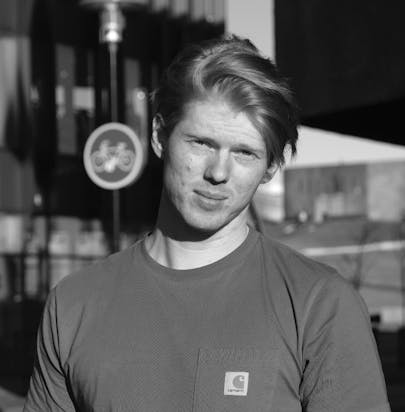Directing & Producing
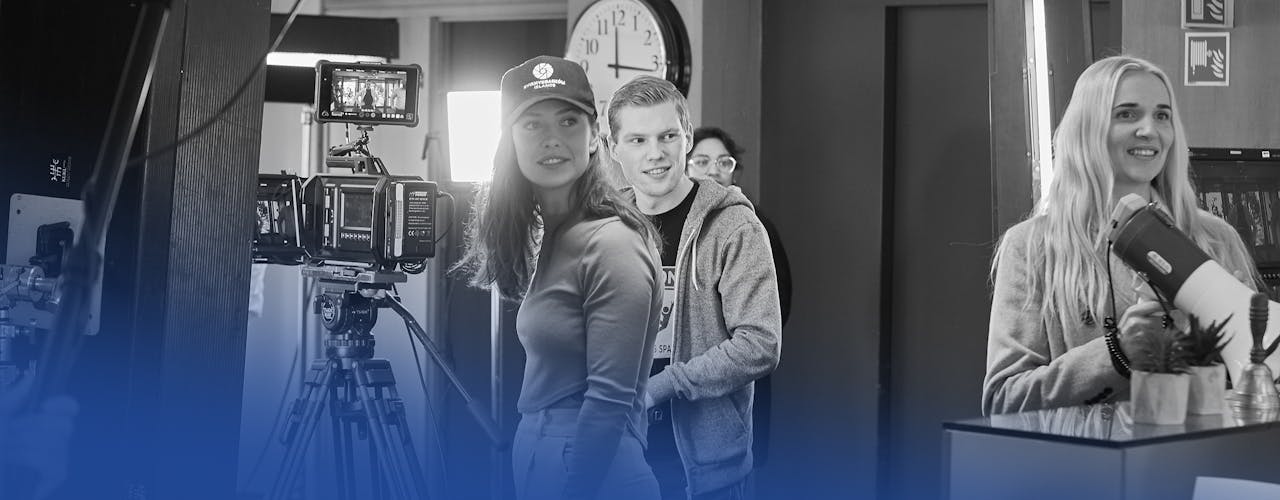
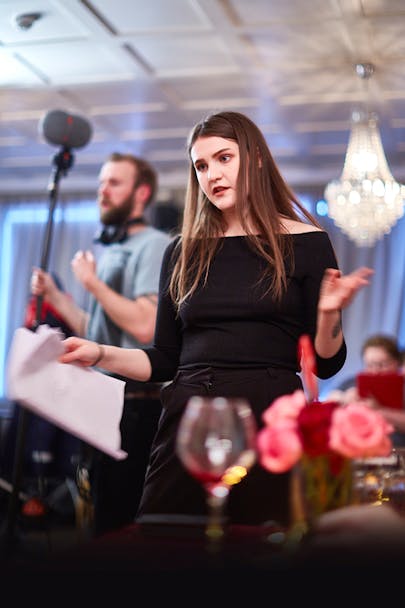
See your ideas come to life
This department offers a diverse, challenging curriculum in directing and producing for film, television and other media. During two years of study you will explore the main roles and functions of both professions through a number of practical exercises, including short films, commercials, music videos, documentaries and various television formats. You will also receive training in screenwriting, film grammar, the directing of actors, as well as in the equipment and technical aspects used in contemporary filmmaking.
The goal of the curriculum is to provide students with a solid understanding of the fundamentals of filmmaking and the skills required in constructing visual narratives. You will learn how to break down a script, stage it for the camera, and communicate with and block actors. You will learn what is involved in producing for film and television and about the nature and structure of both industries. You will learn how a film set is run, and the importance of cooperation, discipline and professional working methods. At the same time, we will encourage you all the while to take risks, be creative and develop your unique voice as a storyteller.
At the end of two years, you will have acquired, not only a new set of skills, but a rich portfolio of your own work, which will serve as your calling card as you enter into the challenging but exciting world of filmmaking.
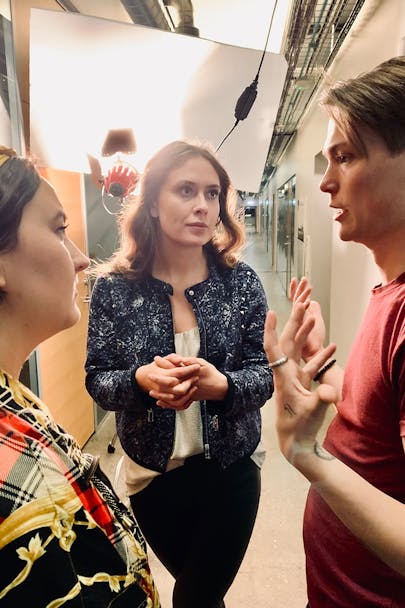
Department 1 prepares you for the following jobs
- Assistant location manager (ALM)
- Assistant Production Coordinator
- Associate Producer
- Casting Director
- Director
- Executive Producer
- First Assistant Director (first AD)
- Line Producer
- Location Manager
- Producer
- Producer Assistant
- Production Coordinator
- Producton Manager
- Script Supervisor (aka continuity)
- Second Assistant Director
Directing and Producing department heads

Arnar Benjamín
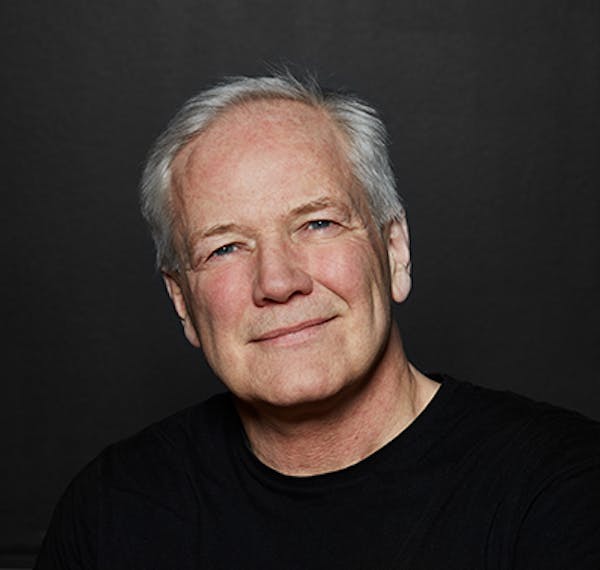
Hilmar Oddsson
Hilmar studied filmmaking at Hochschule für Fernsehehen und Film in München in Germany. He premiered his first film in 1986 and since then Hilmar has made 5 feature films, 5 TV movies and 5 short films, and over 25 music videos. He has made various documentaries and over 100 television shows. He has directed two sitcom series and directed commercials and educational materials. Hilmar has talked about films in TV and written many articles about film related topics. He has taught filmmaking and acting for films for two decades at The Iceland University of the Arts and at The Icelandic Film School, where he served as dean from 2010 to 2017.
First Semester
The role and position of the film director as an actor’s instructor and collaborator is reviewed; his or her relationship with the actor, the basis of this relationship and how it can be most rewarding. Emphasis is on fundamental training where students are introduced to the technical training process of the actor, exercises and characterization methods, inner life and what forms it assumes in the character’s actions and behavior.
Course outline PDF download
The subject of the course is the role and responsibilities of the producer. A producer is a key player in the process of a film project becoming a reality. The producer chooses the project, secures the rights in order to continue, organizes, manages all stages of production and is responsible for bringing the project to completion, securing distribution and selling the project. The producer is the owner of the film. The course examines the division of labor within the production team and the camera crew, and the responsibilities and methods of the producer and production manager. The fundamentals of screenwriting and film scheduling software are taught and the students learn how to create and assemble a production folder. Also the basic work methods of the producer are introduced, production schedules and budgets. Students are introduced to the importance of “pitching” projects and pitching exercises are conducted. The activities of The Icelandic Film Centre are thoroughly introduced and a field trip to The Icelandic Film Centre is organized. The students then capitalize on the knowledge they have acquired during the production of their first-semester final project.
Course outline PDF download
The course covers various fundamental principles of traditional screenwriting, dramatic structure, form and style, dialog, plot and endings. The students learn the basics of screenwriting software.
Course outline PDF download
This course examines the form and nature of film grammar. Specific examples from films are viewed and analyzed with regard to proportional representation, perspective, the composition of sequences, symbols and messages. There is also a practical component to the course where students direct inter al. their own scenes. In addition the course examines the preparatory process of the director before shoots, i.e making a shot list.
Course outline PDF download
This course examines the role, history, trends and different types of music videos and analyzes them from a variety of perspectives. The students then work in groups making music videos, honing their skills in editing and image processing along the way.
Course outline PDF download
This course covers the making of commercials. A particular emphasis is placed on examining the nature, purpose and unique aspects of commercials as a form of filmmaking where the language of film must be used with great precision to convey a specific message. The students work in teams making commercials.
Course outline PDF download
Students work on a short of a maximum length of 7 minutes in a team effort with other departments where the students focus on the field of specialty of their respective departments, the goal being that the project is a completed film of some kind. Emphasis is placed on students working with their own ideas and capitalizing on the experience they have acquired in other courses throughout the semester.
Course outline PDF download
This is a first semester beginners’ course and the goal is to teach students the basics of film production and the use and application of filmmaking equipment. Furthermore, the fundamentals of visual language are reviewed. The course is divided into three parts:
1. Preparation – Film production.
2. Location – Film and sound recording.
3. Post-production – Editing and finishing touches.
Course outline PDF download
Each semester students from all departments must earn credit in collaboration with other departments. The goal is that each department is ensured access to the other departments and to establish a thriving relationship between the departments.
Course outline PDF download
Some of the greatest works in the history of film are introduced, screened and discussed. Ten movies are shown each semester, a total of forty movies. Each semester represents a section of film history. The movies are screened mostly in a chronological order from the silent era well into the late twentieth century.
Course outline PDF download
Second Semester
This course continues to explore the main principles of film directing, with particular emphasis on working with actors. Through practical, hands-on training, students are introduced to a variety of methods and tools to direct actors. The students learn to plan their work process thoroughly through exercises with both acting students and professional actors
Course outline PDF download
A more thorough examination of the topics covered in the first semester and exercises are conducted to establish that the students have gained sufficient understanding of the role of the producer, executive producer and production manager during pre-production, shooting and post-production. The students continue learning about the working tools of the producer and great emphasis is placed on marketing plans, marketing, promotion and distribution. During this course work is also conducted on a second semester film and all production materials are prepared for the film and placed in a production map which is turned in at the end of semester.
Course outline PDF download
This course is a continuation of LST110G and continues exploring basic screenwriting principles and methods. Students work according to the traditional concepts of dramatic structure and delve further into the creation of characters, twists and plot. Different screenplay formats are examined, such as feature screenplays, short scripts, scripts for TV drama, etc. Each student begins to develop a script for a 7 -12 minute short which he or she will produce and direct in later on in the semester.
Course outline PDF download
This course provides an overview of art history with a focus on the relationship between film and painting. What can film learn from painting? Examples from various periods of art history are examined. Examples from the history of film serve to illustrate the close relationship between films and certain paintings or artists, and how paintings can be of use to filmmakers and inspire their films.
Course outline PDF download
This course covers all the main genres of TV programs; entertainment series, interview programs, cooking shows, travel series, reality series, quiz shows, children’s programs, news, news analysis program, TV dramas, documentaries, etc. Students are introduced to the main principles of program-making for TV and the relationship between TV genre, broadcasting time and target audience. Recent “format” series are specially analyzed and an attempt is made to define what makes a concept international. The students develop concepts for TV series and prepare, in collaboration with 3rd semester acting students, promotional material to be pitched and “sold” to representatives of Icelandic television stations.
Course outline PDF download
Students produce and direct a 5-7-minute dramatic short from a screenplay written by themselves or someone else. Production is organized in such a manner that the students act as producers for their fellow students, who in turn produce for them. Emphasis is placed on a professional production process and that students capitalize on the knowledge they have acquired in producing and directing courses.
Course outline PDF download
This course is in continuation of KJA101G. The goal is to further strengthen the basic technical knowledge of the students in the main fields of filmmaking. Each student then makes a film showcasing a personal style and the student’s skill in his or her field of interest. The film should be able to serve as a promotional calling card for the student.
Course outline PDF download
Each semester students from all departments must earn credit in collaboration with other departments. The goal is that each department is ensured access to the other departments and to establish a thriving relationship between the departments.
Course outline PDF download
Some of the greatest works in the history of film are introduced, screened and discussed. Ten movies are shown each semester, a total of forty movies. Each semester represents a section of film history. The movies are screened mostly in a chronological order from the silent era well into the late twentieth century.
Course outline PDF download
Third Semester
This course continues the work from previous directing courses. Students develop further their own methods for working with actors in addition to being introduced to the main trends in film acting and directing actors. The course assignment consists of rehearsing scenes from screenplays, directing actors through the scenes and recording them. The relationship between the actor and the camera is examined as well as the principles that apply to positioning, eye-line matches and the influence the position of the camera has on the performance and movements of the actor. Other key factors of film directing, such as the relationship with the cinematographer and other intimate collaborators, are examined.
Course outline PDF download
This course further examines the role of the producer from the beginning to the end of production, with a thorough focus on how to finance projects, make budget plans and control costs for various productions. The course also examines how co-production deals are drawn up, sales agreements, marketing, distribution and sales. Students work in teams on grant applications to The Icelandic Film Centre. During this course work is also conducted on a third semester film and all production materials are prepared for the film and placed in a production folder which is turned in at the end of semester.
Course outline PDF download
Students continue developing a short script. The focus is on further strengthening characters and dialogue, as well as clarifying descriptions and slug lines. The student should have completed a script by the end of the course. The students write a 7-12 minute short which will be produced later that semester.
Course outline PDF download
This course is intended to give students freedom to experiment. The students are encouraged to investigate new means of artistic creation and expression and experiment with the narrative form. The students work independently and present their projects at the end of the course. The piece should be 5-10 minutes in length and students are free to use all the techniques and methods at their disposal. The work can be a happening, a piece of art, a musical composition, acting and expression, a visual piece, a living event or all of the above at once. Students are encouraged to collaborate on the creation and presentation of the projects for the final presentation at the end of the course.
Course outline PDF download
In this course “multi-camera” shoots for television are further examined. Local and foreign programs recorded in this manner are examined and the making of such programs examined thoroughly. Subsequently the students make a 20-25-minute program under the guidance of an instructor. The team works together on all production aspects, from concept to broadcast, according to a predetermined division of labor. The program is broadcast from a studio through a production control room and the program is expected to be fully prepared with graphics, segments and ready for broadcast. (Note: The material in question is non-fictional).
Course outline PDF download
Students produce and direct a 7-12 minute short from their own script. They prepare shooting schedules, shot lists, budgets, contracts, shoot, edit and make a short film ready for screening, and then direct and edit their films. Students are expected to show up on the first day of class ready to pitch their projects. Throughout this course students are encouraged to continue to review and develop their own unique methodology and style as both directors and producers.
Course outline PDF download
A look at visual language and composition by viewing and analyzing film scenes from various periods. The students stage a film scene in consultation with instructors and examine the visual language impacts, narrative progression and the audience’s experience of the film.
Course outline PDF download
Each semester students from all departments must earn credit in collaboration with other departments. The goal is that each department is ensured access to the other departments and to establish a thriving relationship between the departments.
Course outline PDF download
Some of the greatest works in the history of film are introduced, screened and discussed. Ten movies are shown each semester, a total of forty movies. Each semester represents a section of film history. The movies are screened mostly in a chronological order from the silent era well into the late twentieth century.
Course outline PDF download
Fourth Semester
The course is linked to the semester’s final project where the directorial strategies of each individual project are examined and reviewed from the standpoint of the screenplay and the director’s personal take. Students are expected to draw on the methods they have learned and developed in relation to their collaboration with the actor and visual narratives.
Course outline PDF download
This course is a review of the curricula from previous production courses and is meant to assist students in preparation for their graduation projects according to the acknowledged processes of the producer and production manager. Students are also meant to work with scheduling software, production sheets and other tools which have been introduced to them. The instructor reviews each individual project thoroughly and assists with organization. During this course work is also conducted on a fourth-semester film and all production materials for the film are completed and placed in a production folder which is turned in at the end of semester.
Course outline PDF download
This course is intended to support students with their graduation projects. The student can either write the screenplay him- or herself or engage a screenwriter, but he or she is expected to play a creative part in the development of the script. Students develop and present treatments and drafts of their scripts, focusing on story, narrative methods, plot and structure, fleshed-out characters and dialog. Emphasis is placed on the students further developing their own personal style.
Course outline PDF download
The course is a supplementary course to complement the students’ thesis projects LST425G. At the beginning of semester the tutor reviews, along with the graduating students, where they believe they need additional support for their thesis project. This can be connected to anything in the whole process, from screenplay development to the final post-production stages. Support can be on an individual basis but the best use of the course is attained if the team can agree on where they believe they need further specialized assistance and instruction.
Course outline PDF download
The course examines a variety of documentary forms, their origins and history. Special emphasis is placed on exploring various ways of tackling a subject. The course also covers the development of ideas and the script, different methods of filming, post-production and marketing with the various options available in mind. The projects themselves form an important part of the course and entail shorter projects and one documentary short which test the students’ meticulousness and powers of concentration.
Course outline PDF download
Each student develops, produces and directs an 8-15 minute film of his or her own choosing. This project will be the student’s graduation project and great emphasis is therefore placed on refining and polishing skills and procedures in all aspects of production. Each student oversees his or her own project him- or herself and serves as main producer and director, but is encouraged to recruit a skilled production team and film crew to ensure all aspects of the production are executed in a professional manner. Students work under the supervision of an instructor.
Course outline PDF download
This course covers contemporary filmmaking. What trends and vogues have been prevalent during the last decade? What is happening right now and what does the near future hold in store? The course emphasizes student participation in finding answers to these questions. Each student makes a presentation with film samples where he or she discusses contemporary influences and artists.
Course outline PDF download
Each semester students from all departments must earn credit in collaboration with other departments. The goal is that each department is ensured access to the other departments and to establish a thriving relationship between the departments.
Course outline PDF download
Some of the greatest works in the history of film are introduced, screened and discussed. Ten movies are shown each semester, a total of forty movies. Each semester represents a section of film history. The movies are screened mostly in a chronological order from the silent era well into the late twentieth century.
Course outline PDF download
This course is intended to prepare students for entering the workforce. The establishment of companies, the most common types of job contracts are examined, as well as the responsibilities they entail for contractors and clients or employees and employers. Fees and taxes which have to be accounted for are studied, such as VAT, pension funds, union memberships, etc. Students work on a grant application to The Icelandic Film Centre along with a budget plan.
Course outline PDF download


